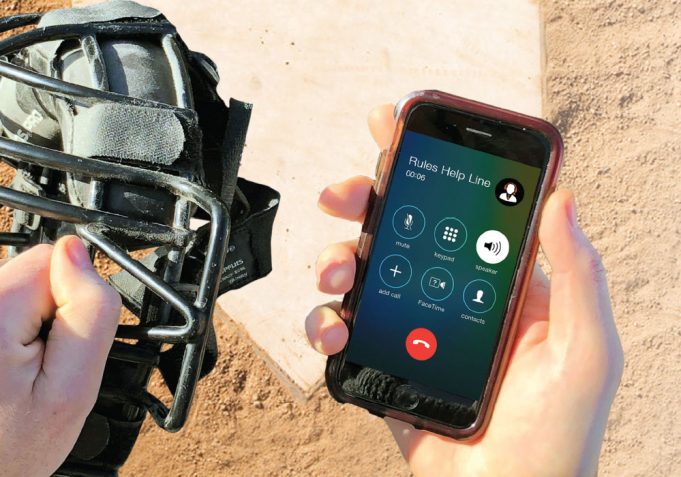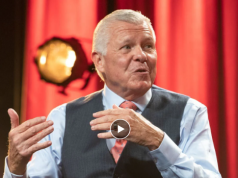Over the past three decades, video review and replay have become staples in game administration. Officials’ judgment is often subject to review, and there is a framework for correcting errors.
But the situation is different when it comes to rules enforcement. While many sports provide the opportunity for teams or competitors to file a protest if they feel they have been wronged, resolving a protest takes time. Seldom is there a mechanism in place for immediate resolution of a dispute involving rules or game administration.
But that circumstance may be changing.
Little League Baseball’s tournament series involves teams from around the globe and culminates each year with a World Series in seven different divisions (including girls’ softball). Taking even a day to resolve a protest is a practical impossibility. So a protocol is in place to adjudicate protests immediately.
Jim Smith resides in Philadelphia and has had a long career umpiring various levels of baseball including Little League. He currently serves on Little League Baseball’s Umpire Advisory Board.
“It takes an enormous amount of (time) to run through the Little League tournaments en route to a World Series,” he said. “They can’t have any delay in progressing through that tournament. That’s why they resolve that stuff immediately.”
If a Little League manager wants to challenge a rules interpretation, the game is halted immediately. An on-site game director overseeing the event will place a call to a district administrator, who will issue a ruling.
If the manager disagrees with that ruling, he may appeal to the regional level and the district administrator will contact the regional director who has jurisdiction over that particular game. (In the East, for instance, the regional director is based in Bristol, Conn.)
The last step in the appeal process would be a call to the Little League Baseball tournament committee.
Regardless of who hands down the final ruling, the game in question is finished that day and the tournament continues on schedule.
“We don’t continue the game until that protest or rules problem is resolved,” Smith said.
This type of scenario is not uncommon in some sports. Softball tournaments customarily have an umpire-in-chief on site to assist with rules matters. Volleyball tournaments utilize a head referee who fills the same role.
Even MLB allows umpires to seek assistance with rules issues. That provision is part of the expanded replay regulations that were adopted in 2014.
Section II-K(6) outlines that the crew chiefs — at their sole discretion — may communicate with the replay official in New York at any time during a game for purposes of:
• Record-keeping (i.e., to review the ball-strike count to a batter, the number of outs in an inning, and the score of the game);
• Determining whether a player or players properly were substituted for during a game;
• Determining, after appeal, whether a batter fails to bat in his proper turn, and another batter completes a time at bat in his place; or
• Confirming that an umpire’s decision on the field was consistent with the Official Baseball Rules under circumstances in which the misapplication of the rule(s) being checked could result in a protest of the game.
At the high school level, such rules resources aren’t typically available. Additionally, high school governing bodies tend to shy away from rules-based protests, and many state organizations do not recognize them. There are exceptions of course.
One state that does allow protests is Georgia. This past January the Georgia High School Association (GHSA) stepped in when Discovery High filed a protest following a one-point loss to Collins Hill in a boys’ basketball game. The protest was filed after a Discovery player was assessed a technical foul for punching away an inbounds pass with one second left in regulation, allowing time to run out. Discovery was leading by one point at the time but a Collins Hill player made both technical free throws to seemingly give his team a 46-45 win.
After receiving the protest, the GHSA ruled the officials erred in assessing the technical foul. The two teams wound up replaying the final second of the game.
Last June, the GHSA upheld a protest following a state baseball tournament semifinal round despite the fact the umpires made the correct call by rule.
That case illustrates that a formal protest protocol is not immune to potential problems. But at a time when officials’ decisions are subject to more scrutiny than ever, it might be advantageous for governing bodies to establish a system for dealing with protests or dealing with rules-related issues before a protest. Or, in extreme cases, a lawsuit — is filed. In 2016, for example, Fenwick High School sued the Illinois High School Association after an officiating error in a Class 7A football semifinal game against Plainfield North led to an untimed down. North tied the game on a field goal and forced the contest into overtime, and eventually won. The issue went to court and although the results stood, the continuation of the playoffs was temporarily in doubt. In 2014, Oklahoma’s football playoffs did come to a halt. Douglass High School sued the Oklahoma Secondary School Activities Association after a rules misapplication wiped out its go-ahead touchdown in the waning moments of a playoff game. Although a court ultimately rejected the lawsuit seeking to replay the game’s final moments, a temporary restraining order delayed the playoffs by a week until the matter could be heard. If a rules hotline could help avoid some of these situations, would it be worth it?
Establish a War Room?
One option might be establishing a “war room,” similar to what MLB, the NFL, the NHL and the NBA have in place, with an official, an interpreter or a state athletic association representative on hand, not to review judgment calls but to assist with rules interpretations and game administration if requested.
For instance, if eight district football playoff games are being played on a Friday night, each officiating crew would have a means of communicating with the “war room.” If a rules-related issue arose (penalty enforcement for instance), the referee would be able to reach out for assistance if necessary to be sure the penalty was being enforced correctly.
In the Georgia baseball playoff case, the umpiring crew utilized a cell phone to speak with a state rules interpreter at the behest of an on-site GHSA representative after the winning run seemingly scored on a walk-off, bases-loaded walk. But a teammate was called out for not touching third base, nullifying the run under NFHS rules and forcing extra innings.
Although the ruling was correct (there were differences between rules codes that caused some initial confusion), the losing team protested on the basis that the umpires’ use of a cell phone violated GHSA policy. The protest was eventually upheld.
The protest aside, this situation illustrates what may be a viable option for high school officials going forward — a lifeline to a support network if there is a rules controversy.
For such a system to achieve its aim, there would have to be some strict protocols in place. For instance, making it available for rules-related issues, not judgment calls. And governing bodies would have to decide whether such a system could be used as a mechanism for coaches to lodge protests or whether it would be available to officials only.
Some governing bodies have an alternate or standby official on hand at certain postseason games. They’re prepared to step onto the field or court if needed, but if not they handle certain administrative responsibilities. If they’re on duty at a basketball game for instance, they track on whom a foul is called and who the correct free-throw shooter should be, and assist with scoring and timing issues. They might also assist with replay-related matters if video review is being utilized.
If it’s a football game, the standby official might note down and distance, be in a position to assist with penalty enforcement, or get numbers of players involved in an altercation.
The idea of giving officials access to a “help line” while a contest is in progress is unsettling to some in the industry. Some contend that “going for help” on a rules-related situation is a sign of weakness or vulnerability — sports officials are supposed to know the rules. But complications can arise and officials can make erroneous rulings, particularly if they work multiple levels of the same sport and deal with different rules codes.
As technology increasingly impacts the officiating industry, it is becoming ever more likely that protest/rules review protocols will become more common.
Traditionalists may scoff, but as we have seen with replay/video review, once the methodology has been introduced, it becomes virtually impossible to discard it. Industry leaders might be wise to consider what should come next.
What's Your Call? Leave a Comment:
Note: This article is archival in nature. Rules, interpretations, mechanics, philosophies and other information may or may not be correct for the current year.
This article is the copyright of ©Referee Enterprises, Inc., and may not be republished in whole or in part online, in print or in any capacity without expressed written permission from Referee. The article is made available for educational use by individuals.



















